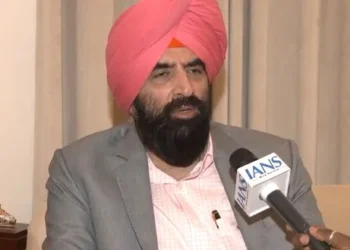A congestion pricing plan covering Lower and Midtown Manhattan took effect on Sunday, making New York City the first US city to implement such a plan.
Vehicles will be tolled to enter the congestion relief zone with the amount depending on the type of vehicle, time of day, whether any crossing credits apply, and the method of payment with discounts and exemptions applicable to certain drivers or vehicles, the Metropolitan Transportation Authority (MTA) said.
Passenger and small commercial vehicles, trucks, buses, and motorcycles entering the congestion relief zone will be charged once per day while passengers of taxis and for-hire vehicles will be charged for each trip to, from, within, or through the congestion relief zone.
The tolls would be adjusted upward in 2028 and 2031 as regulators phase out 40 per cent of discounts offered at the beginning.
It’s estimated that the congestion pricing plan would drive down the number of vehicles entering the congestion relief zone and vehicle miles in the zone by 10 per cent and 5 per cent, respectively.
The MTA is expected to add $1 billion of revenues each year to fund its capital spending plan of as much as $15 billion.
Controversy around the congestion plan has led to multiple lawsuits in New York and New Jersey, but opponents failed to block the implementation, Xinhua news agency reported.
The concept gained traction in New York for a brief period in 2007 when then-Mayor Michael R. Bloomberg introduced a congestion-pricing initiative, which ultimately failed to advance in the State Legislature. A decade later, Governor Andrew M. Cuomo revisited the proposal in response to a crisis affecting subway services. The tolling plan was ultimately approved as part of the state budget in 2019.
However, just prior to its scheduled implementation in June, Governor Kathy Hochul, a Democrat, postponed the plan, citing concerns that the tolls could negatively impact the city’s economy. Some critics argued that the proposal, which public opinion polls indicated was largely unpopular, could adversely affect Democratic candidates in the upcoming November elections.























